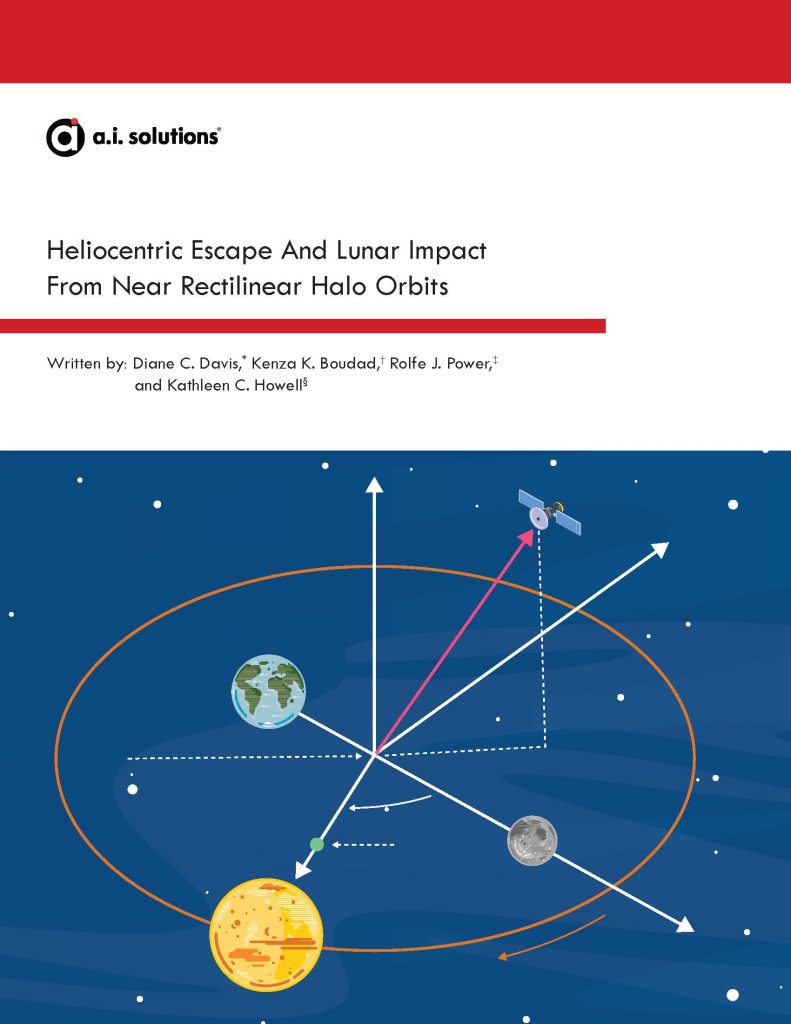
Automated
How Do Celestial Objects Influence the Trajectory of Spacecraft?
Spacecraft departing from the Gateway in a Near Rectilinear Halo Orbit (NRHO) experience gravitational forces from the Moon, the Earth, and the Sun, all of which can be simultaneously significant. These complex dynamics influence the eventual destinations of the departing spacecraft. The current investigation examines the flow of objects leaving NRHOs in the Bicircular Restricted Four-Body Problem, and results are applied to heliocentric escape and lunar impact trajectories in a higher-fidelity ephemeris model. Separation maneuver magnitude, direction, and location are correlated with successful departure to various destinations via maps and specific examples.
Introduction
The Gateway1 is proposed as a crewed outpost supporting a variety of exploration missions. As a staging ground for lunar surface missions and for exploration beyond cislunar space, the Gateway will experience spacecraft periodically arriving and docking, and subsequently, spacecraft and objects with a wide range of shapes and masses will also depart the Gateway for other destinations. Notable examples of Gateway departures include lander descent to the lunar surface, safe disposal of discarded logistics modules or ascent elements to heliocentric space, and deployment of cubesats to various locations in cislunar space. Each departure is governed by the dynamics of the Gateway orbit and the surrounding dynamical environment. The current baseline orbit for the Gateway is a Near Rectilinear Halo Orbit (NRHO) near the Moon.2 NRHOs exhibit nearly stable behavior, but over time, any unmaintained object in such an orbit eventually departs due to the small instabilities associated with these NRHOs. A separation maneuver speeds the departure from the NRHO, but the effects of the maneuver on the spacecraft behavior depend on the location, magnitude, and direction of the burn. The departing flow changes significantly based on these burn parameters, resulting in a large design space. Employing maps and other visualizations aids in condensing the potential departure options. The maps and visuals enable a broad understanding of the design space and identification of particular trajectories that lead to desired behavior; broad regions of the separation maneuver space are also excluded as undesirable.
Previous investigations3,4 examined departure from the NRHO and escape from the Earth-Moon vicinity from the perspective of logistics module (LM) disposal. The current investigation extends this work, exploring several additional aspects of the departure dynamics from the NRHO. First, the bicircular restricted 4-body problem (BCR4BP) is employed to characterize the natural flow of trajectories departing the NRHO. Then, maneuvers that result in escape to heliocentric space are explored. Groups of separation burns that yield sufficient energy to escape the Earth-Moon vicinity are identified through Hamiltonian maps, and then maneuver orientations that allow solar gravity to pull a departing spacecraft into heliocentric space are determined. Finally, lunar impact trajectories originating from the NRHO are explored.
To learn more, you can read our white paper “Heliocentric Escape and Lunar Impact from Near Rectilinear Halo Orbits.”
Click the image below to download the white paper.



